First Person: 'We Have Found a Better Land' | reviews, news & interviews
First Person: 'We Have Found a Better Land'
First Person: 'We Have Found a Better Land'
BBC National Chorus of Wales's composer-in-residence seeks inspiration in Welsh Patagonia for a new commission
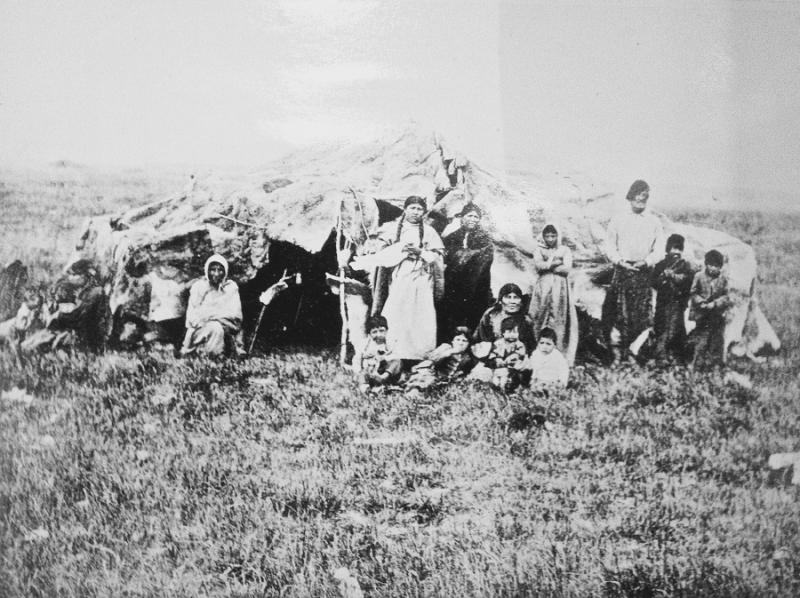
"Helo, ti yw Mark?" A friendly-looking woman on the tiny plane asks me my name. She is a teacher from a Welsh-speaking school in Patagonia, Ysgol yr Hendre, escorting her pupils home from a trip to Cardiff. "I was told to look out for you on the plane. Come and sit with us!" she continues.
I spend the rest the journey chatting to the teachers and schoolchildren about their recent adventures in Wales before landing at a tiny airport plonked in the middle of a vast plain. Stepping off the plane, I am struck by an overwhelming sense of space – the massive skies of Patagonia seem to go on forever. I say my goodbyes to my new friends, promising to visit the school over the coming days, and look for my host, Ana Chiabrando Rees, who has kindly offered to pick me up. Ana runs the guest house, Plas y Coed, where I’m staying. We drive the 10 miles or so from the airport to the lovely town of Gaiman and chat the whole way as though we were old friends. By the time we arrive at Ana’s guest house I’m armed with useful information about where to go and who to meet over the coming days. (Pictured below: Mark Bowden plays a Welsh organ in the Museo Histórico Regional, Gaiman)
 To clear my head, I walk along the heritage trail in Gaiman, taking in the colossal landscape of the surrounding desert and exploring the very first buildings to be built by the Welsh in Patagonia. I come to the Museo Antropológico, which preserves the fragmentary remains of the indigenous Tehuelche culture. The story goes that the Tehuelche befriended the desperate Welsh settlers in the early days of Y Wladfa teaching them how to use the land, to hunt guanacos and rhea birds, and to trade with merchants in Buenos Aires. During military campaigns in the 1870s, known as the Conquest of the Desert, Argentina colonised the wild landscapes of Patagonia wiping out almost entirely the native people in the process, to the dismay of the Welsh population. My piece draws upon Tehuelche creation myths collected in Johannes Wilbert and Karin Simoneau’s Folk Literature of the Tehuelche Indians. In the final movement, lines from a letter written by Julio Roca – the army general who would become President of Argentina – to the minister of war are interspersed with a mythological image of a sacred meteorite, believed by the Tehuelche to be the embodiment of the first primordial woman.
To clear my head, I walk along the heritage trail in Gaiman, taking in the colossal landscape of the surrounding desert and exploring the very first buildings to be built by the Welsh in Patagonia. I come to the Museo Antropológico, which preserves the fragmentary remains of the indigenous Tehuelche culture. The story goes that the Tehuelche befriended the desperate Welsh settlers in the early days of Y Wladfa teaching them how to use the land, to hunt guanacos and rhea birds, and to trade with merchants in Buenos Aires. During military campaigns in the 1870s, known as the Conquest of the Desert, Argentina colonised the wild landscapes of Patagonia wiping out almost entirely the native people in the process, to the dismay of the Welsh population. My piece draws upon Tehuelche creation myths collected in Johannes Wilbert and Karin Simoneau’s Folk Literature of the Tehuelche Indians. In the final movement, lines from a letter written by Julio Roca – the army general who would become President of Argentina – to the minister of war are interspersed with a mythological image of a sacred meteorite, believed by the Tehuelche to be the embodiment of the first primordial woman.
I visit the Museo Histórico Regional located at the old railway station in Gaiman. With the assistance of museum director Fabio González I sift through diaries, letters, stories and poetry in the museum’s archives. I come across the diary of Joseph Seth Jones, written aboard the Mimosa, the tea clipper which carried the first Welsh settlers to Patagonia in 1865. The diary contains both poignant and mundane observations about the arduous, gruelling voyage. My own translations of a few lines from Joseph’s diary, alongside a verse sung by the first settlers during their departure from Liverpool in 1865, appear in the piece. Fragments from letters and prose written by the Patagonian author Eluned Morgan, who was born aboard the ship Myfanwy during its journey from Britain to Argentina in 1870, have also made their way into the piece in beautiful translations by E Wyn James. Morgan’s fragments are set alongside lines from William Jones of Bala’s 1865 letter to relatives back home in Wales about the bitter disappointment he felt towards the "infinite plain, without trees or rocks" that he found himself in.
 Gaiman and the surrounding valley is not the whole story of the Welsh in Argentina. In the 1880s a band of men, known as Los Rifleros, trekked from the Chubut Valley to the Andes in search of better land. I follow their trail in the relative comfort of a Don Otto bus and am struck by the contrasts between the arid East and the mountainous West (pictured above). The full drama of the Paith – the Welsh name for the interior steppe lands of Patagonia – unfolds before me as I try to imagine the hardship experienced by those early trailblazers who set out in search of a better land.
Gaiman and the surrounding valley is not the whole story of the Welsh in Argentina. In the 1880s a band of men, known as Los Rifleros, trekked from the Chubut Valley to the Andes in search of better land. I follow their trail in the relative comfort of a Don Otto bus and am struck by the contrasts between the arid East and the mountainous West (pictured above). The full drama of the Paith – the Welsh name for the interior steppe lands of Patagonia – unfolds before me as I try to imagine the hardship experienced by those early trailblazers who set out in search of a better land.
In the Andes I stay with Jorge Miglioli, a descendant of one of the original Rifleros. We chat into the evenings about the Welsh in Patagonia and how the Andean settlements came to be established. He shares with me his book Rocky Trip, which includes his own translation of a poem, "Los Altares", by Patagonian poet Owen Tydur Jones. The poem contemplates monumental natural rock sculptures located deep in the Paith alongside the destruction of the Tehuelche people. With Owen and Jorge’s blessing I have used the poem to conclude the work.
So my piece, entitled We Have Found a Better Land, has been inspired by the extraordinary spaciousness of the landscape and by the unusual story of the Welsh settlers and their remarkable legacy which lives on in modern Patagonia, for sure. But the music has also been influenced by the Tehuelche – a people and culture whose ties to the land date back over 13,000 years and who were vital to the survival of the early Welsh settlers.
- Mark Bowden's We Have Found a Better Land will be premiered in Hoddinott Hall, Cardiff on Sunday 15 November
- The BBC National Orchestra of Wales is currently on tour in Argentina. Their concert from the Teatro Colón in Buenos Aires is available on the iPlayer
- Mark Bowden's website
Overleaf: browse images from the visit to Welsh Patagonia by harpist Catrin Finch, conductor Grant Llewelyn and members of the BBC National Orchestra of Wales
The BBC National Orchestra of Wales visited Argentina as part of the 150th anniversary celebrations of the Welsh settlement in Patagonia. Harpist Catrin Finch joined them as they toured schools. They went to Puerto Madryn, where the Mimosa made landfall in 1865, and Trelew, home of the Welsh-language school Ysgol yr Hendre, and also visited Gaiman, spiritual home of the Welsh in Patagonia.
Click on the thumbnails below to enlarge.
Explore topics
Share this article
Add comment
The future of Arts Journalism
You can stop theartsdesk.com closing!
We urgently need financing to survive. Our fundraising drive has thus far raised £49,000 but we need to reach £100,000 or we will be forced to close. Please contribute here: https://gofund.me/c3f6033d
And if you can forward this information to anyone who might assist, we’d be grateful.

Subscribe to theartsdesk.com
Thank you for continuing to read our work on theartsdesk.com. For unlimited access to every article in its entirety, including our archive of more than 15,000 pieces, we're asking for £5 per month or £40 per year. We feel it's a very good deal, and hope you do too.
To take a subscription now simply click here.
And if you're looking for that extra gift for a friend or family member, why not treat them to a theartsdesk.com gift subscription?
more Classical music
 BBC Proms: A Mass of Life, BBCSO, Elder review - a subtle guide to Delius's Nietzschean masterpiece
Mark Elder held back from blasting the audience with a wall of sound
BBC Proms: A Mass of Life, BBCSO, Elder review - a subtle guide to Delius's Nietzschean masterpiece
Mark Elder held back from blasting the audience with a wall of sound
 BBC Proms: Le Concert Spirituel, Niquet review - super-sized polyphonic rarities
Monumental works don't quite make for monumental sounds in the Royal Albert Hall
BBC Proms: Le Concert Spirituel, Niquet review - super-sized polyphonic rarities
Monumental works don't quite make for monumental sounds in the Royal Albert Hall
 Frang, Romaniw, Liverman, LSO, Pappano, Edinburgh International Festival 2025 review - sunlight, salt spray, Sea Symphony
Full force of the midday sea in the Usher Hall, thanks to the best captain at the helm
Frang, Romaniw, Liverman, LSO, Pappano, Edinburgh International Festival 2025 review - sunlight, salt spray, Sea Symphony
Full force of the midday sea in the Usher Hall, thanks to the best captain at the helm
 Elschenbroich, Grynyuk / Fibonacci Quartet, Edinburgh International Festival 2025 review - mahogany Brahms and explosive Janáček
String partnerships demonstrate brilliant listening as well as first rate playing
Elschenbroich, Grynyuk / Fibonacci Quartet, Edinburgh International Festival 2025 review - mahogany Brahms and explosive Janáček
String partnerships demonstrate brilliant listening as well as first rate playing
 BBC Proms: Akhmetshina, LPO, Gardner review - liquid luxuries
First-class service on an ocean-going programme
BBC Proms: Akhmetshina, LPO, Gardner review - liquid luxuries
First-class service on an ocean-going programme
 Budapest Festival Orchestra, Iván Fischer, Edinburgh International Festival 2025 review - mania and menuets
The Hungarians bring dance music to Edinburgh, but Fischer’s pastiche falls flat
Budapest Festival Orchestra, Iván Fischer, Edinburgh International Festival 2025 review - mania and menuets
The Hungarians bring dance music to Edinburgh, but Fischer’s pastiche falls flat
 Classical CDs: Hamlet, harps and haiku
Epic romantic symphonies, unaccompanied choral music and a bold string quartet's response to rising sea levels
Classical CDs: Hamlet, harps and haiku
Epic romantic symphonies, unaccompanied choral music and a bold string quartet's response to rising sea levels
 Kolesnikov, Tsoy / Liu, NCPA Orchestra, Chung, Edinburgh International Festival 2025 review - transfigured playing and heavenly desire
Three star pianists work wonders, and an orchestra dazzles, at least on the surface
Kolesnikov, Tsoy / Liu, NCPA Orchestra, Chung, Edinburgh International Festival 2025 review - transfigured playing and heavenly desire
Three star pianists work wonders, and an orchestra dazzles, at least on the surface
 BBC Proms: Láng, Cser, Budapest Festival Orchestra, Iván Fischer review - idiomatic inflections
Bartók’s heart of darkness follows Beethoven’s dancing light
BBC Proms: Láng, Cser, Budapest Festival Orchestra, Iván Fischer review - idiomatic inflections
Bartók’s heart of darkness follows Beethoven’s dancing light
 Weilerstein, NYO2, Payare / Dueñas, Malofeev, Edinburgh International Festival 2025 review - youthful energy and emotional intensity
Big-boned Prokofiev and Shostakovich, cacophonous López, plus intense violin/piano duo
Weilerstein, NYO2, Payare / Dueñas, Malofeev, Edinburgh International Festival 2025 review - youthful energy and emotional intensity
Big-boned Prokofiev and Shostakovich, cacophonous López, plus intense violin/piano duo
 theartsdesk at the Three Choirs Festival - Passion in the Cathedral
Cantatas new and old, slate quarries to Calvary
theartsdesk at the Three Choirs Festival - Passion in the Cathedral
Cantatas new and old, slate quarries to Calvary



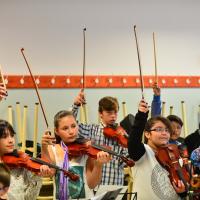
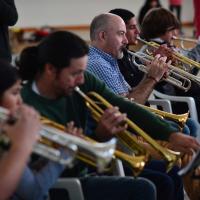
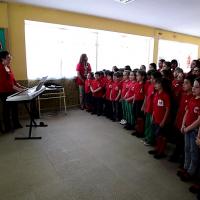

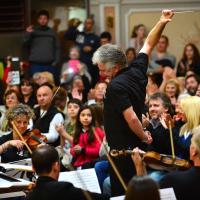
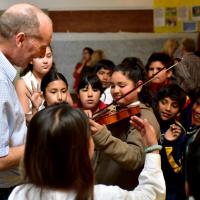
Comments
Hello!